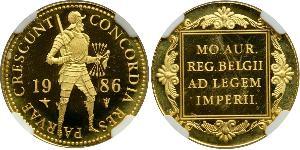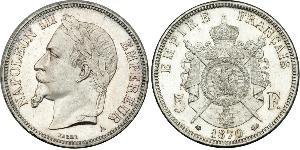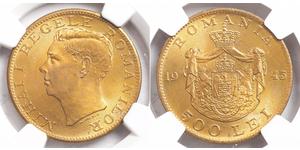1 Ducat (Verkauft für $565.0)
1809, Netherlands, Kingdom of Holland, Louis Napoleon. Gold Ducat Coin. RR!
Mint Year: 1809
Denominations: Ducat
Mint Place: Utrecht (bee)
Reference: Friedberg 322, KM-38 ($600 in VF / $800 in XF!). Rare!
Condition: Removed from jewellery (tooled rim at 12 o'clock), otherwise about XF!
Material: Pure Gold (.983)
Diameter: 20mm
Weight: 3.42gm
Reverse: Bare head of Louis Napoleon (Napoleon's independent-minded brother) left.
Legend: LODEW . NAP . KON . VAN HOLL .
Obverse: Quartered arms of the Kingdom of Holland (French eagle and lions in quarters), topped by French crown. Privy mark (bee) below.
Legend: KONINGRIJK HOLLAND / 1809.. (bee)
Napoleon felt he did not have enough control over the Netherlands, thus he sent his brother, Louis Napoleon, and made him king. Many citizens were very happy with his arrival, they had feared that the Republic would be incorporated into the French Empire. Louis introduced the Guilder, and had a Penal Law Code compiled, largely modelled on French law. In 1810 Napoleon convinced Louis to abdicate and annexed the kingdom into the French Empire making the Netherlands, in effect, an integral part of France itself.
The Kingdom of Holland 1806–1810 (Dutch: Koninkrijk Holland, French: Royaume de Hollande) was set up by Napoleon Bonaparte as a puppet kingdom for his third brother, Louis Bonaparte, in order to better control the Netherlands. The name of the leading province, Holland, was now taken for the whole country. In 1807 Prussian East Frisia and Jever were added to the kingdom but in 1809, after a British invasion, Holland had to give over all territories south of the river Rhine to France.
Also in 1809, Dutch forces fighting on the French side participated in defeating the anti-Bonapartist German rebellion led by Ferdinand von Schill, at the Battle of Stralsund.
King Louis did not perform to Napoleon's expectations—he tried to serve Dutch interests instead of his brother's—and the kingdom was dissolved in 1810 after which the Netherlands were annexed by France until 1813. The kingdom of Holland covered the area of present day Netherlands, with the exception of Limburg, and parts of Zeeland, which were French territory. East Frisia (in present day Germany) was also part of the kingdom.
While the Napoleonic Kingdom of Holland was short-lived, in the aftermath of Napoleon's fall the precedent of Netherlands having been a Kingdom facilitated the House of Orange's successful efforts to upgrade themselves from stadholders to full-fledged monarchs.

|
Beigetragen von:
anonymous 2014-02-25 |
|
||
|
||
|
||
|
||
1000 Reis Kingdom of Portugal (1139-1910) Silber Karl I. vo ...
Diese Gruppe hat 42 Münzen / 40 Preise
⇑
500 Leu Rumänien Messing
Diese Gruppe hat 2 Münzen / 1 Preise
⇑

-600-300-77UKb0OMYlMAAAFEg1sGv2cV.jpg)

-300-150-USrBwcI0orIAAAEoIMkrWt2s.jpg)
 Deutsch
Deutsch Русский
Русский Українська
Українська English
English Italiano
Italiano Français
Français Español
Español 汉语
汉语






-300-150-dU0KbzbiBbcAAAFLl9Gjls34.jpg)








